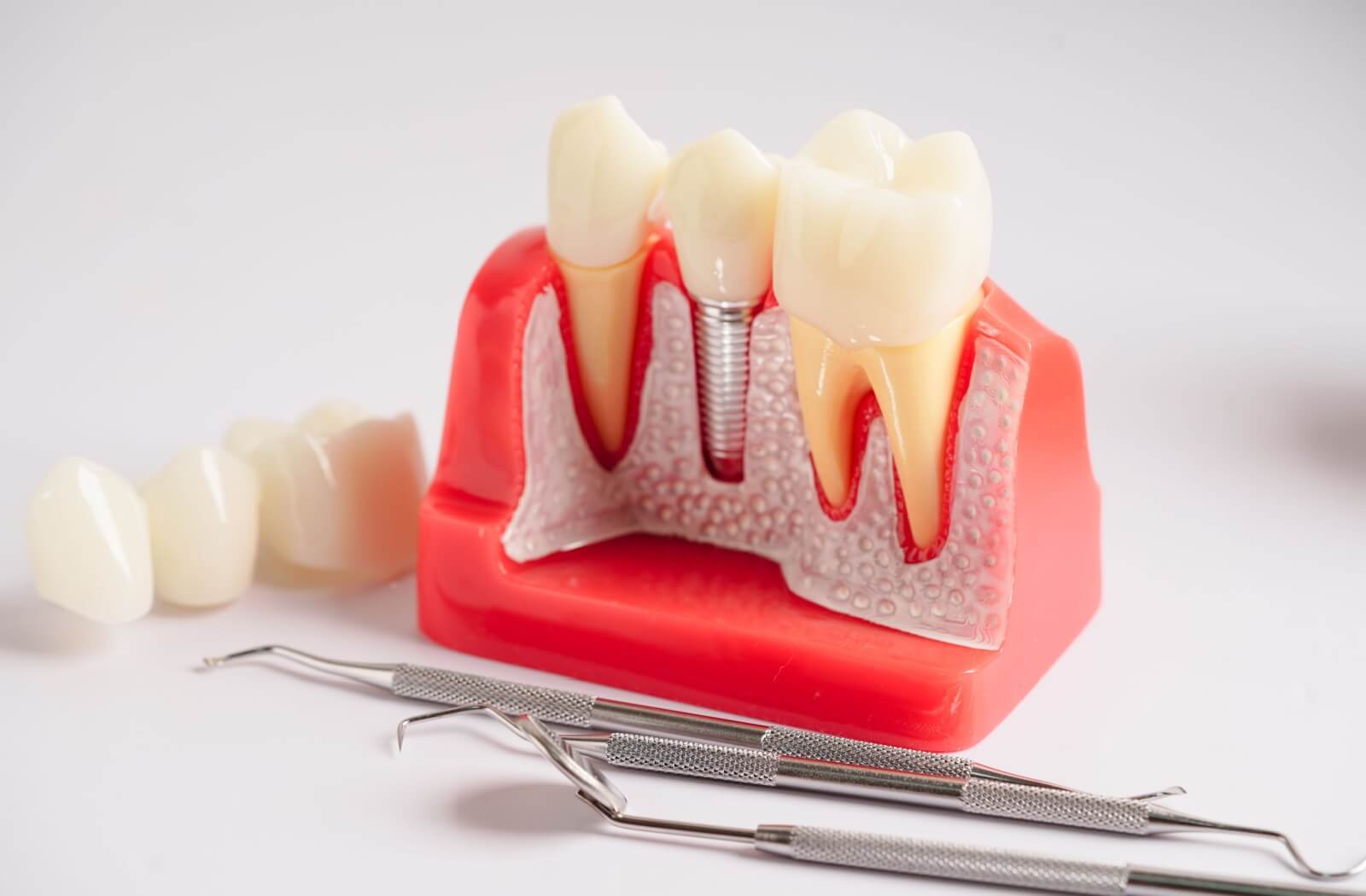How Long Does a Dental Implant Take?

Dental implants have revolutionized how we approach oral health restoration, offering a durable and aesthetically pleasing solution to missing teeth. For many, understanding the timeline and process of dental implant surgery is important when making an informed decision.
How long the procedure takesdepends on your specific implant surgery plan. Factors like how many implants you're getting and whether or not you need a bone graft can significantly affect how long it will be until your dental implant is fully healed. The best way to know exactly how long a dental implant surgery will take is to contact your dentist.
The Growing Popularity of Dental Implants
Dental implants have become increasingly popular as more people seek long-term solutions for tooth loss. The ability to blend seamlessly with natural teeth while providing a sturdy foundation for chewing and speaking often makes implants a preferred choice over traditional dentures or bridges.
What Are Dental Implants?
Dental implants, crafted from titanium or titanium alloys, act as artificial roots for new teeth. Once embedded in the jawbone, they serve as anchors for prosthetic teeth such as crowns, bridges, or dentures. The primary goal of dental implants is to restore functionality and aesthetics while preventing bone loss and preserving oral health.
The Stages of Dental Implant Surgery
Dental implant surgery isn't just a single procedure; it's a series of steps that involve careful planning and execution. From the initial consultation to the final placement of the prosthetic teeth, each stage plays a vital role in the surgery's success.
Consultation & Evaluation
Before any surgery, a thorough evaluation is necessary. This involves a dental exam, X-rays, and discussions about your medical history and overall health. The initial consultation allows your dentist to understand your needs and create a tailored treatment plan, setting the stage for a successful implant procedure.
Pre-Surgery Planning
During this planning phase, decisions are made regarding the number of implants required, the type of implants, and the surgical approach to be used. Spending time in this phase is important, as it impacts the procedure's success and helps align the treatment with your unique requirements.
Number of Implants Required
The number of implants needed directly influences the length of the surgery. While a single implant is straightforward, multiple implants for extensive reconstructions require more time and careful planning.
The Surgical Placement of Implants
The surgical phase involves placing the implant into the jawbone. This step can vary in duration depending on the number of implants and the complexity of the case. While a single implant may take 1–2 hours, more complex cases require additional time and precision.
Different surgical techniques can also affect the duration and complexity of the procedure. Traditional implant surgery may take longer, while methods like guided surgery offer more precision and speed. Your dentist will choose the most appropriate technique based on your specific situation.
The Healing Period
Once the implants are placed, a healing period known as osseointegration begins. During this time, the implant fuses with the jawbone, providing a stable foundation for the final restoration. Depending on individual healing rates and bone health, this phase can last from several weeks to a few months.
Bone Quality & Density Considerations
The quality and density of your jawbone significantly impact the implant's success. In cases where the bone isn't dense enough, additional procedures like bone grafting may be needed. These preparatory steps enhance bone quality and provide a stable base for the implant but also extend the overall timeline.
Abutment Attachment & Restoration

After successful osseointegration, an abutment is attached to the implant. This minor surgical step serves as the connector for the prosthetic teeth. The final restoration process involves fitting crowns, bridges, or dentures, which may take additional visits for adjustments.
Follow-Up Appointments
Follow-up appointments play a critical role in monitoring the healing progress and helping the implants integrate properly. These appointments allow your dentist to address any concerns and make necessary adjustments, contributing to the overall success of the implant process.
Take the Next Step
While the dental implant process may seem lengthy, the experience and care involved help provide optimal outcomes. The time invested in planning, surgery, and healing leads to lasting improvements in oral health and functionality.
At Wing Dental, we specialize in personalized dental care, offering guidance and support throughout your implant journey. Whether you're exploring options or ready to proceed, our team is here to assist you. Book a consultation today to learn more about how dental implants can improve your smile and overall well-being.